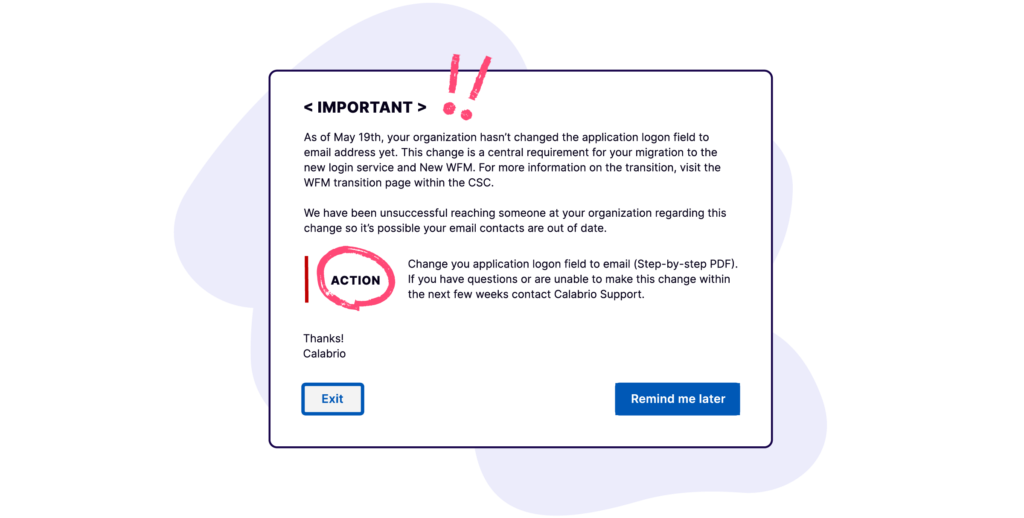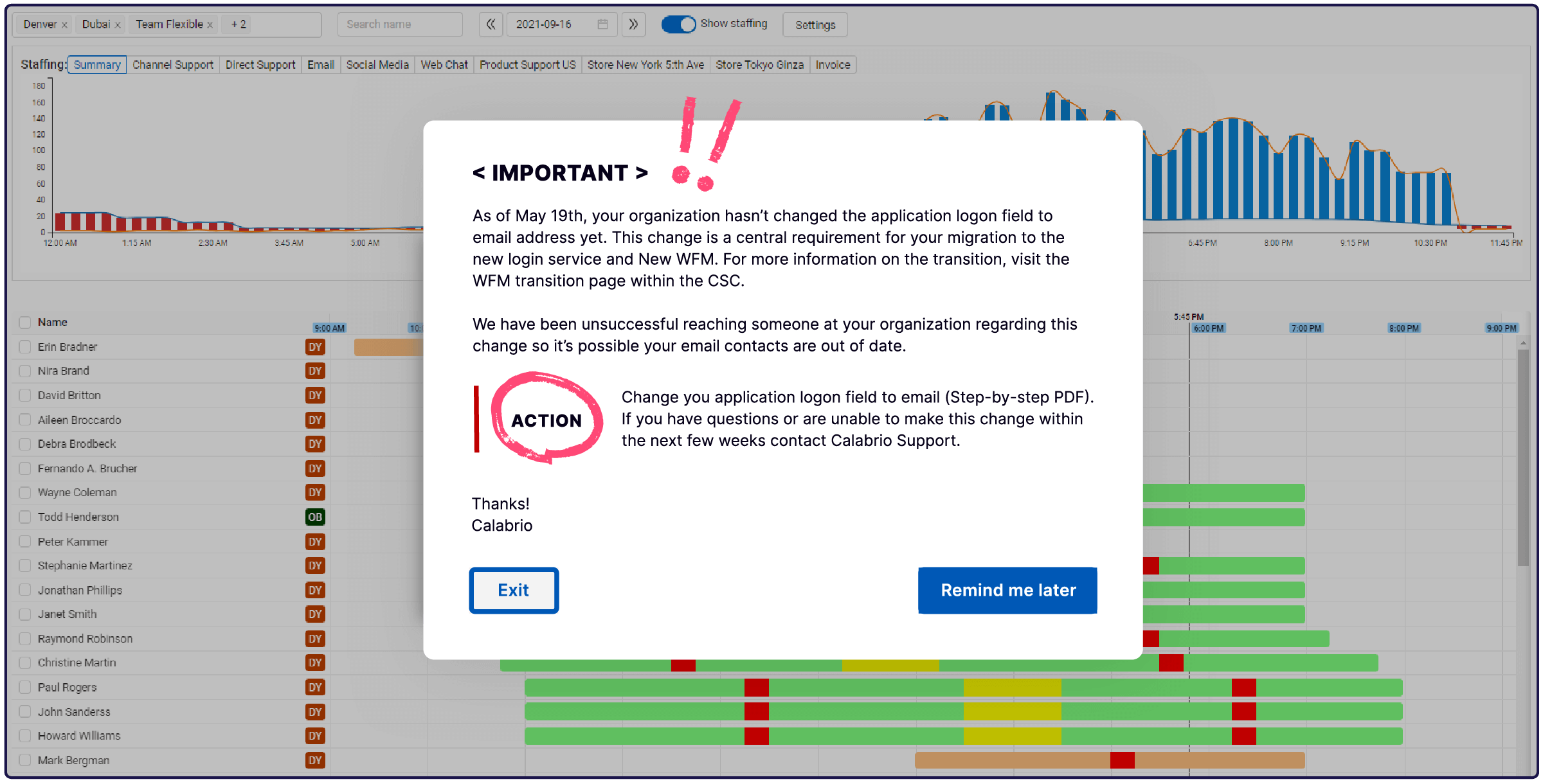Reaching the right users
Just because something is simple, doesn’t mean it can’t be highly effective. Coupled with timeliness and relevance, the simplest messages are often the ones that drive the most important outcomes. With Pendo, encouraging meaningful action through well-positioned communication is easy.
When Calabrio rolled out a technical update to their product, it created a dependency requiring customers to make changes in their own local environments—something that Calabrio couldn’t do for them. The team needed a fast and scalable way to reach users and inform them of the update. “We needed to reach the right people,” explained Lina Karlsson, senior product content owner at Calabrio. “We were trying to do it through email. For some, it worked—but we didn’t get answers from many customers.”
This manual outreach took valuable time and resources away from the Calabrio team. They also struggled to reach the users they needed to by relying solely on email. They needed a messaging solution to more effectively communicate with the customers impacted by the change, preferably within the context of the product itself. “We realized we could actually use Pendo to reach those specific users,” said Karlsson.
Attention, please
The Calabrio team first started by identifying the customers they had not been able to reach during their first round of email blasts. They were careful to only target the users who could actually make the changes Calabrio was suggesting, so as not to inundate their other users with messaging that wasn’t relevant to them. “We set user permissions information as metadata in Pendo,” Karlsson explained. “That way, we could reach the specific people who actually had the right permissions to make the change we wanted them to make.”
The Calabrio team then set up an in-app guide, targeting that specific segment of users. They used a lightbox-style guide that appeared in the middle of the page whenever a targeted user logged in, and included a message informing them of the change and the actions they needed to take. The Calabrio team also included a link to a page containing additional information and resources where users could learn more.

Karlsson noted that the team configured the in-app guide to reappear until the user acknowledged the notice or took the requested action in their account. They also included the link to the additional resources page within the guide itself so they could monitor traffic and interest in the page. “[We wanted to know] if users were actually clicking the link or if they were actually interested in learning more—or not,” said Karlsson. This gave the Calabrio team valuable insight into what other types of content or enablement tools might be needed to set their users up for success.
Calabrio has seen great success with this in-app guide use case so far. Within the first three weeks of publishing the guide, they were able to reach—and see action from—more than half of the customers they needed to contact. “There were a lot of customers we didn’t have to hunt down manually,” Karlsson said, freeing up the Calabrio team to focus on other higher-value activities.




